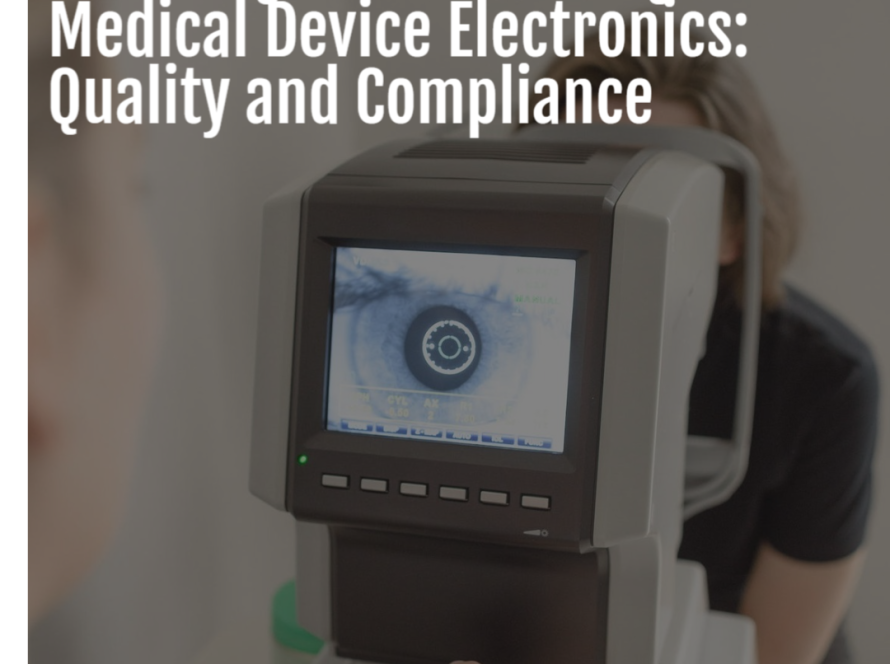The medical device industry is evolving rapidly, and 2024 is set to be a landmark year for innovation and growth. With advancements in technology, changing regulatory landscapes, and an increasing focus on patient-centered care, the industry is poised for significant transformation.
Here, we explore some of the most impactful trends shaping the medical device industry in 2024.
Trend 1. Digital Health and Telemedicine
The COVID-19 pandemic accelerated the adoption of telemedicine, and this trend shows no signs of slowing down. In 2024, digital health technologies, including remote monitoring devices, telehealth platforms, and mobile health apps, are expected to become even more integral to healthcare delivery.
- Remote Monitoring: Devices that allow patients to monitor their health conditions from home, such as glucose monitors, blood pressure cuffs, and ECG patches, are becoming more sophisticated. These devices are often connected to apps that can alert healthcare providers if any abnormalities are detected. To make sure timely intervention.
- Telehealth Platforms: The convenience of virtual consultations has made telehealth a permanent fixture in the healthcare system. These platforms are continuously being improved to offer more comprehensive services, including virtual reality (VR) for physical therapy and mental health consultations.
Trend 2. Artificial Intelligence (AI) and Machine Learning
AI and machine learning are revolutionizing the medical device industry by enhancing diagnostic accuracy, personalizing treatment plans, and streamlining operations.
- Diagnostic Tools: AI-powered diagnostic tools can analyze medical images, such as X-rays, MRIs, and CT scans, with remarkable precision. These tools assist radiologists by highlighting potential areas of concern. This reduces the time needed for diagnosis and improves accuracy.
- Personalized Medicine: Machine learning algorithms can analyze vast amounts of patient data to identify patterns and predict outcomes. This enables the development of personalized treatment plans tailored to the individual’s unique genetic makeup, lifestyle, and medical history.
Trend 3. Wearable Technology
Wearable devices are not new, but their capabilities are expanding rapidly. In 2024, wearables are expected to offer more advanced features and improved accuracy.
- Health Trackers: Devices like smartwatches and fitness bands now include advanced sensors that can monitor a wide range of health metrics, including heart rate variability, oxygen saturation, and even stress levels.
- Medical-Grade Wearables: Companies are developing wearables that go beyond fitness tracking to offer medical-grade monitoring. For instance, wearable ECG monitors and continuous glucose monitors are becoming more common. Additionally, it provides critical data that can help manage chronic conditions.
Trend 4. 3D Printing
3D printing technology is making significant inroads in the medical device industry. It offers the potential to create customized and cost-effective medical devices.
- Customized Implants and Prosthetics: 3D printing allows for the creation of implants and prosthetics that are perfectly tailored to the patient’s anatomy. This customization can lead to better outcomes and improved comfort for patients.
- Surgical Instruments: Surgeons can now use 3D-printed instruments that are designed specifically for individual procedures. This can enhance precision and reduce surgery times.
Trend 5. Regulatory Changes and Compliance
The regulatory landscape for medical devices is continuously evolving, with a focus on ensuring safety and efficacy while fostering innovation.
- FDA Modernization: The U.S. Food and Drug Administration (FDA) is updating its regulatory framework to keep pace with technological advancements. This includes faster approval processes for breakthrough devices and updated guidelines for digital health technologies.
- Global Harmonization: Efforts are underway to harmonize medical device regulations across different regions. This can help companies streamline their processes and bring new devices to market more quickly on a global scale.
Trend6. Sustainability and Eco-Friendly Devices
Sustainability is becoming a key consideration in the development of medical devices. Companies are increasingly focusing on eco-friendly designs and manufacturing processes.
- Recyclable Materials: The use of recyclable and biodegradable materials in medical devices is on the rise. This not only helps reduce environmental impact but also appeals to environmentally conscious consumers and healthcare providers.
- Energy Efficiency: Devices that require less energy to operate are becoming more popular. This is particularly important for wearable devices and remote monitoring tools that need to have long battery lives.
Trend 7. Robotics and Automation
Robotics and automation are transforming various aspects of the medical device industry, from manufacturing to surgical procedures.
- Surgical Robots: Robotic-assisted surgery is becoming more common. It offers greater precision and control during procedures. Moreover, these robots can perform complex surgeries with minimal invasiveness, leading to faster recovery times for patients.
- Automated Manufacturing: Automation in manufacturing processes can enhance efficiency, reduce costs, and improve the consistency and quality of medical devices.
Trend 8. Focus on Mental Health
The importance of mental health has gained significant recognition, and medical devices are being developed to support mental well-being.
- Wearables for Mental Health: Devices that track and manage stress levels, sleep patterns, and other mental health indicators are becoming more sophisticated. These wearables can provide real-time feedback and suggestions to help users manage their mental health effectively.
- Digital Therapeutics: Apps and devices that deliver evidence-based therapeutic interventions for mental health conditions, such as depression and anxiety, are gaining traction. These digital therapeutics can be used in conjunction with traditional therapies to enhance treatment outcomes.
Conclusion
The medical device industry in 2024 is characterized by rapid innovation and a strong focus on improving patient care. From the integration of AI and advanced wearables to the adoption of sustainable practices and regulatory modernization, the industry is evolving to meet the needs of both patients and healthcare providers. As these trends continue to develop, we can expect even more groundbreaking advancements that will shape the future of healthcare.
With significant advancements in digital health, AI, wearable technology, and sustainable practices, 2024 is set to be an exciting year. The convergence of these trends will not only enhance patient care but also streamline operations within the medical technology industry. At Cygnus Corp, we are committed to staying at the cutting edge of these developments. Additionally, we make sure to continue to provide the best possible solutions for our clients and partners. Keep an eye on these trends, as they will undoubtedly redefine the landscape of medical technology in 2024 and beyond.




